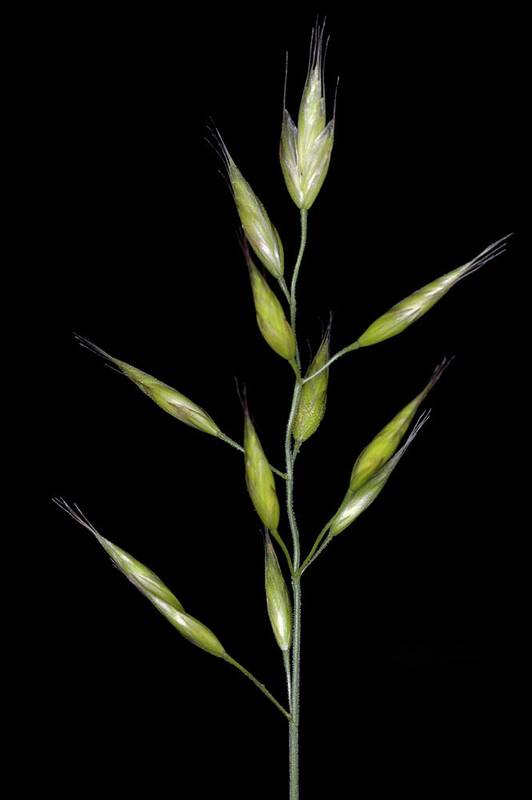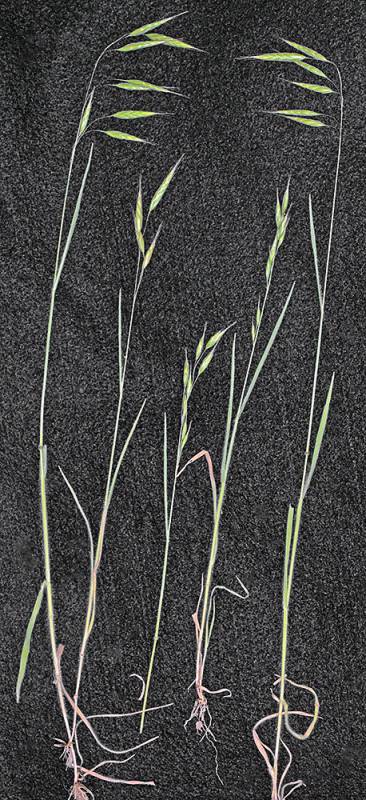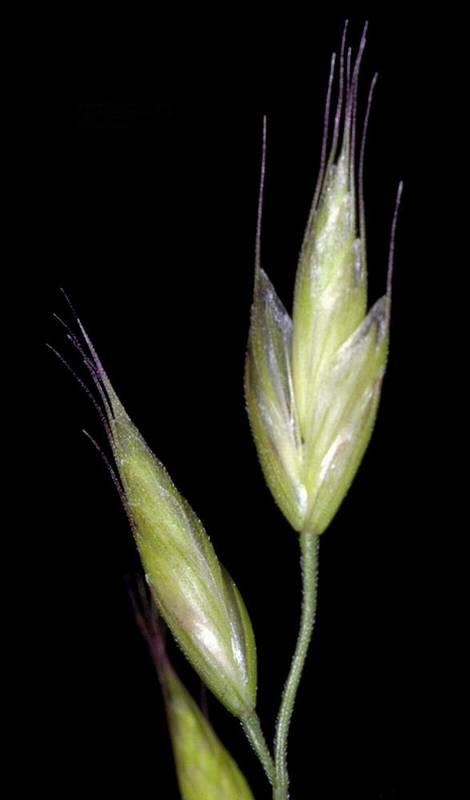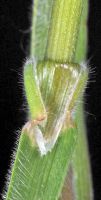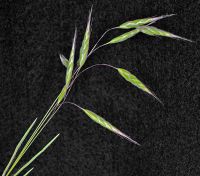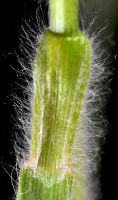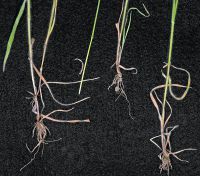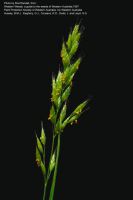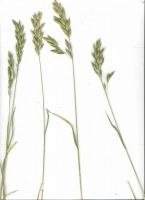Distribution: Occurring on both sides of the Cascades crest in Washington; Alaska to Baja California, east to Idaho and Montana.
Habitat: Prairies, bluffs, grasslands, waste ground, roadsides, dry hillsides, and other disturbed areas.
Flowers: April-July
Origin: Introduced from Europe
Growth Duration: Annual
Conservation Status: Not of concern
Pollination: Wind
Annual, the culms 2-7 dm. tall, usually soft-pubescent throughout.
Sheaths closed; ligules 0.5-1 mm. long, hairy; blades flat, 1.5-4 mm. broad.
Inflorescence an erect, narrow, crowded panicle 3-10 cm. long, the spikelets exceeding the pedicles; spikelets 5- to 7-flowered, 1-2 cm. long; first glume 4-6 mm. long, lanceolate, the second slightly longer and wider; lemmas 6.5-8.5 mm. long, the area between the nerves depressed and concave; lemmas with straight awns 6-10 mm. long from a bifid apex.
Publication: Sp. Pl. 1: 77. 1753. 1753.
Bromus mollis L. [HC]
PNW Herbaria: Specimen records of Bromus hordeaceus in the Consortium of Pacific Northwest Herbaria database
WA Flora Checklist: Bromus hordeaceus checklist entry
OregonFlora: Bromus hordeaceus information
E-Flora BC: Bromus hordeaceus atlas page
CalPhotos: Bromus hordeaceus photos

